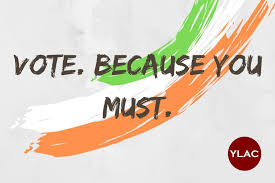Impact Of Digital Campaigns On Voter Turnout In Urban Vs. Rural India

In India, the political landscape has witnessed a profound transformation over the last decade, primarily driven by the rise of digital technology. With nearly half of the country’s population now having access to the internet, the role of digital campaigns in elections has become undeniable.
These campaigns, which leverage social media, mobile apps, websites, and digital ads, have changed how political parties interact with voters and how voters make their decisions. However, the impact of digital campaigns on voter turnout varies across the country. There is a stark difference in how digital campaigns affect urban and rural India.
As digital technologies become an integral part of political campaigns, political strategists must understand the distinct ways in which they influence voter engagement and turnout in urban and rural areas. The digital divide and varying internet access, literacy, and technology usage create different outcomes for urban and rural voters.
Urban India: The Digital Revolution and Voter Turnout
With better access to the internet, widespread smartphone use, and high levels of digital literacy, urban voters are more likely to be influenced by digital campaigns. Social media platforms like Facebook, Twitter, Instagram, and newer apps like WhatsApp are often the primary channels for political engagement in urban areas. These platforms provide urban voters with instant, constant information about candidates, political parties, and policy issues.
Digital campaigns in urban areas are effective for several reasons. Political parties often use these platforms to share campaign videos, manifestos, speeches, and interactive content such as polls and live sessions. These tools inform voters and encourage interaction, allowing political parties to address voter concerns directly. As a result, urban voters are often more engaged in the political process, leading to higher voter turnout.
Moreover, the rise of social media influencers, online advertisements, and micro-targeted content allows campaigns to reach specific groups with personalized messages. Urban voters, often inundated with information from multiple sources, are more likely to participate in the election when digital campaigns speak directly to their concerns, such as employment opportunities, infrastructure development, education, and healthcare.
Digital campaigns also encourage increased political awareness and mobilization in urban areas. Social media platforms and messaging apps like WhatsApp allow campaigns to quickly organize rallies, public meetings, and events, ensuring high voter engagement. Additionally, voter registration and online voting reminders are increasingly being shared via these digital channels, further enhancing participation. The convenience of digital voting-related services in cities also contributes to a higher turnout.
Rural India: Bridging the Digital Divide
While internet penetration grows in rural areas, it still lags behind urban areas. According to reports, less than 30% of rural India has reliable internet access, compared to over 70% of urban India. Accessing online content is difficult or impossible for many rural voters due to limited infrastructure, low digital literacy, or high data costs.
Moreover, rural India is characterized by a different set of challenges and priorities. Issues such as agricultural policies, rural development, irrigation, electricity, and roads are more pressing for rural voters. While digital campaigns can play a role in disseminating information, the absence of reliable internet access, compounded by lower smartphone penetration in these areas, makes it challenging to engage rural voters through digital means alone.
Political parties attempting to engage rural voters digitally must navigate these barriers. In rural areas, campaigns often rely on offline methods, such as word-of-mouth communication, community meetings, and local radio broadcasts. While effective in some cases, these methods do not have the same rapid, far-reaching impact as digital campaigns in urban areas.
Despite these limitations, digital campaigns are beginning to make a difference in rural India, but they need to be adapted to the unique needs of these voters. Increasing mobile phone penetration, especially with cheaper smartphones, has opened new doors for digital engagement in rural areas. Campaigns that use voice-based services, localized content, and mobile-friendly formats have had more success in reaching rural voters. Messaging apps like WhatsApp, widely used in rural areas, allow political parties to distribute information and organize activities at a grassroots level. However, to truly engage rural voters, political campaigns must focus on providing value-driven content that resonates with local issues, combining digital methods with traditional face-to-face engagement.
Digital Campaigns’ Effect on Voter Turnout
The impact of digital campaigns on voter turnout in India’s urban and rural areas varies significantly. In urban areas, where access to technology is widespread, digital campaigns have proven practical tools for increasing voter participation. These campaigns provide voters with easy access to candidate information, engage them with interactive content, and enable campaigns to reach specific communities with tailored messaging. The result is higher voter awareness, more significant mobilization, and increased turnout.
In rural India, while digital campaigns have some impact, their reach is limited by internet access, digital literacy, and infrastructure. Although mobile phones are becoming increasingly ubiquitous in rural households, the lack of stable internet connections means that digital content often fails to reach its intended audience. For many rural voters, the lack of familiarity with digital platforms and the scarcity of localized, accessible content on digital channels hampers the effectiveness of online campaigns. However, the rise of mobile-based services and affordable data plans gradually bridges the gap, enabling political campaigns to gain traction in rural areas, albeit slower.
It is important to note that while digital campaigns may drive higher voter turnout in urban areas, the full potential of digital campaigns can only be realized when offline strategies in rural areas complement them. For example, campaigns can combine door-to-door canvassing, public meetings, and local media broadcasts with digital outreach to create a more inclusive, holistic approach. The key to success in both urban and rural areas lies in the ability to adapt digital strategies to the context of each region, ensuring that the message reaches and resonates with voters from all walks of life.
